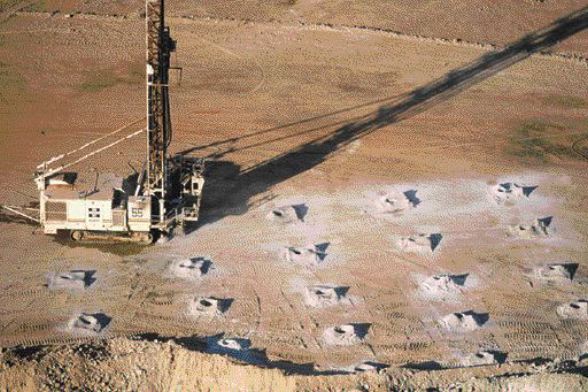Vancouver — In a classic western-style showdown, Arizona-based Phelps Dodge (PD-N) is sticking to its guns and guarding its cash after a major shareholder, a New York City-based hedge fund, cranked up demands for a “multibillion” share-buyback program to fend off “potential acquirers.”
Atticus Capital, which boosted its stake in Phelps Dodge to 8.6% last fall, says it is now the copper giant’s largest shareholder. With an estimated US$9 billion under management, the fund has considerable clout and isn’t afraid to use it. It helped block Deutsche Boerse AG’s proposed takeover of the London Stock Exchange last year, and has weighed in on matters relating to investments in Archipelago Holdings (AX-X), Ashland (ASH-N), Arcelor (ARLOF-O) and Mittal Steel (MT-N), to name but a few.
Phelps Dodge is one of the world’s largest producers of copper and molybdenum, and robust metal prices pushed the company’s net earnings last year to a record US$1.5 billion, or US$15.37 per share. The company’s stock also had a spectacular run, reaching a 52-week high of US$167.12 before easing back to about US$145 (before the 2-for-1 stock split that took effect March 13).
Since boosting its stake in Phelps Dodge last fall, Atticus has urged the company to use a US$2.5-billion cash reserve to repurchase stock. Chairman Timothy Barakett stated that a multibillion share buyback offered a return on equity “superior to most capital expenditures.”
While getting out at top dollar at the top of the market is smart strategy from a hedge-point perspective, Phelps Dodge has other ideas about how best to use its profits. Its caution is understandable, as the company teetered on the verge of bankruptcy just five years ago, with net losses of US$275 million. Losses reached US$341.6 million in 2002, and it took until mid-2003 for the company to regain its financial footing.
Phelps Dodge responded to Atticus (and other shareholders) by offering a plan to balance “four priorities,” including investing in new growth opportunities in the world-famous Copperbelt of central Africa. The other priorities were to invest in existing businesses, improve the quality of assets, reward shareholders, and improve its balance sheet.
To reward shareholders, the company authorized a “capital return program” valued at US$1.5 billion, which included the return of more than US$900 million through special dividends last year. Another US$600 million is allocated for return (through dividends) in 2006.
Atticus continued to press its case for a share-buyback program, and both sides met to discuss the issue on several occasions. Phelps Dodge offered board representation to Barakett, or an independent individual selected by the firm, to help solve the impasse.
Phelps Dodge’s offer was declined “for the benefit of other owners,” in a public letter by Atticus, which stated that Phelps Dodge was “significantly over-capitalized,” and that recent dividends had not gone far enough to address the company’s “bloated balance sheet.”
Atticus also warned the company that a “significant buyback of stock” is the “surest guaranty of independence” from a cash-rich, copper-poor competitor. “Your competitors are now uniformly long (of) excess capital and short of large-scale copper projects. Phelps Dodge, with its exceptional pipeline of near-surface, low-cost projects, is surely an attractive target.”
The letter ended with the ultimatum that if the board of Phelps Dodge was not prepared to “return this excess capital” (though a share-buyback program), then Atticus would work with other shareholders and “potential acquirers” to maximize value for the owners of the company. The fund engaged outside advisers to help formulate options.
Steven Whisler, chairman and chief executive officer, responded publicly too, by calling the share buyback demand “reckless.” He stated that the company would not “recklessly” add debt in a “risky bet on future metal prices in a very volatile market.”
Whisler added that the company could increase its commitment to return cash to shareholders, “only as our actual results justify it.” He said the company intends to retain sufficient cash balances to “maintain financial flexibility and to ensure appropriate funding of growth and asset improvement projects.”
Phelps Dodge spokesman Peter Faur said no new developments have taken place since the public exchange of letters in February. He said the company remains committed to its previously outlined priorities.
Atticus Capital could not be reached for comment.
As for being a potential takeover target, Phelps Dodge has hinted that it could become an acquirer instead, through “strategic opportunities” aimed at increasing long-term shareholder value. The company operates primarily in the Americas, where it began operations more than 170 years ago, but is looking to Africa’s Copperbelt for long-term growth.
Phelps Dodge expects to play a lead role in developing the large, Tenke Fungurume copper-cobalt project in the Democratic Republic of the Congo. An open-pit mining operation is proposed that could produce an estimated 100,000 tonnes copper cathode per year and 8,000 tonnes cobalt cathode per year, with potential for expansion.
The company holds an effective 57.75% interest in the project, which hosts measured and indicated resources estimated at 223 million tonnes grading 2.9% copper and 0.3% cobalt, plus 314.3 million tonnes of 4% copper and 0.25% cobalt in the inferred category.


Be the first to comment on "Phelps Dodge sticks to its guns as New York demands share-buyback"